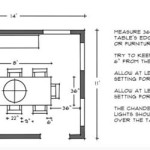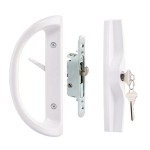Patio Swivel Rocker Chair Base Replacement: A Comprehensive Guide
The enjoyment of outdoor living often hinges on the comfort and functionality of patio furniture. Swivel rocker chairs, in particular, offer a relaxing seating option, combining gentle rocking motion with the freedom to turn and face different directions. However, the base of these chairs, which bears the brunt of weight, motion, and exposure to the elements, is often the first component to fail. This article provides a comprehensive guide to understanding the need for, selecting, and executing a patio swivel rocker chair base replacement.
A deteriorating chair base can manifest in several ways. Rust accumulation, especially in metal bases, weakens the structural integrity, leading to instability and potential collapse. Worn-out bearings, which facilitate the swivel and rocking motion, can cause squeaking, grinding, or a complete seizing of the mechanism. Cracks or fractures in the base material, be it metal, resin, or wood, compromise the chair's weight-bearing capacity. Ignoring these signs poses a safety risk and diminishes the overall enjoyment derived from the chair.
Replacing a damaged chair base is often more cost-effective than purchasing an entirely new chair. It's also a more sustainable practice, extending the life of existing furniture and reducing waste. A successful replacement requires careful assessment of the existing chair, proper selection of a compatible base, and meticulous execution of the replacement process.
Identifying the Need for Replacement
Before undertaking a chair base replacement, a thorough assessment is crucial to confirm the need and identify the specific problem. Begin by visually inspecting the entire base, looking for signs of rust, cracks, or structural damage. Pay close attention to the points where the base connects to the seat and the supporting legs. These areas are typically subject to the greatest stress and are therefore more susceptible to failure.
Next, test the chair's swivel and rocking mechanisms. A smooth, quiet motion indicates healthy bearings, while any resistance, noise, or jerky movement suggests wear or damage. Attempt to manually rock and swivel the chair to pinpoint the source of the problem. Observe whether the base remains stable during these movements or if it wobbles or shifts, indicating loose connections or structural weakness.
Evaluate the material composition of the base. Metal bases are prone to rust, especially in humid climates or near saltwater. Resin bases can become brittle and crack under prolonged exposure to sunlight and temperature fluctuations. Wooden bases are susceptible to rot and insect damage. Understanding the specific material of the existing base will inform the selection of a suitable replacement.
Finally, consider the age of the chair. Even with proper maintenance, chair bases are subject to wear and tear over time. If the chair is several years old and the base shows signs of deterioration, replacement may be the most prudent option, even if the damage appears minor. A compromised base can fail catastrophically, posing a safety hazard.
Selecting the Appropriate Replacement Base
Choosing the correct replacement base is paramount to ensuring a successful and safe repair. Several factors must be considered, including compatibility, material, size, and style.
Compatibility is the most critical consideration. The replacement base must be compatible with the existing chair seat. This typically involves matching the mounting hole pattern and dimensions of the old base. Carefully measure the distance between the mounting holes on the chair seat and compare these measurements to the specifications of potential replacement bases. Some bases may offer adjustable mounting points to accommodate a wider range of chair designs.
The material of the replacement base should be chosen based on durability, weather resistance, and aesthetic preference. Metal bases, typically made of steel or aluminum, offer excellent strength and stability. Aluminum is particularly resistant to rust, making it a good choice for coastal environments. Resin bases are lightweight and relatively inexpensive but may not be as durable as metal. Consider powder-coated metal for enhanced rust resistance and a more attractive finish. All-weather resin is a good option for durability and weather-resistance in a resin option. Wooden bases offer a classic aesthetic but require regular maintenance to prevent rot and insect damage.
Match the size and load capacity of the existing base. The replacement base should be able to safely support the weight of the chair and its occupants. Check the manufacturer's specifications to ensure that the base meets or exceeds the original load capacity. A base that is too small or too weak can compromise the chair's stability and pose a safety risk.
Consider the aesthetic style of the chair. The replacement base should complement the design of the existing seat and overall patio furniture. A mismatch in style can detract from the chair's appearance. Choose a base that is similar in color, shape, and finish to the original.
When selecting a replacement, sourcing from reputable suppliers is essential. Read online reviews and compare prices from different vendors. Ensure that the supplier offers a warranty or return policy in case of defects or incompatibility.
Executing the Base Replacement
With the appropriate replacement base secured, the next step is to execute the replacement process. This requires careful preparation, proper tools, and meticulous attention to detail.
Begin by gathering the necessary tools. These typically include a wrench or socket set to remove the old base, a screwdriver to install the new base, penetrating oil to loosen rusted bolts, and safety glasses to protect your eyes. A work gloves are good for protecting hands. A rubber mallet may also be helpful for gently persuading stubborn parts.
Before disassembling the old base, take detailed photographs of the existing configuration. This will serve as a visual reference during the reassembly process. Pay particular attention to the orientation of the base, the placement of any washers or spacers, and the routing of any cables or wires.
Apply penetrating oil to any rusted bolts or connections and allow it to soak for several minutes. This will make it easier to loosen the fasteners without damaging them. Gently tap the bolts with a hammer to help the oil penetrate.
Carefully remove the old base, one bolt at a time. If any bolts are seized or stripped, use a bolt extractor or vise grips to remove them. Take care not to damage the chair seat during this process.
Clean the chair seat and mounting surface thoroughly to remove any dirt, rust, or debris. This will ensure a proper fit for the new base.
Attach the new base to the chair seat, using the original bolts or new bolts of the same size and thread. Tighten the bolts securely, but avoid over-tightening, which can strip the threads or damage the base. Use a torque wrench to ensure that the bolts are tightened to the manufacturer's specifications.
Test the swivel and rocking mechanisms to ensure that they are functioning properly. The chair should move smoothly and quietly without any resistance or noise. If any adjustments are necessary, loosen the bolts slightly and reposition the base until the desired motion is achieved. Retighten the bolts securely.
Inspect the chair for any loose connections or potential hazards. Make sure that all bolts are tightened, and that there are no sharp edges or protruding parts that could cause injury. A final inspection ensures proper function and safety.
Following these steps will ensure a successful patio swivel rocker chair base replacement, extending the life of the furniture and providing years of comfortable outdoor seating.

Swivel Chair Base Kit 24 Unpainted Patio Furniture Supplies

Swivel Rocker Base Winston Patio Furniture Supplies

Cabo Barbados Swivel Glider Base Replacement Part Patiohq

Cabo Barbados Swivel Glider Base Replacement Part Patiohq

Swivel Chair Base 24 Patio Furniture Supplies

Swivel Rocker Base Chair

Swivel Rocker 1 Piece Sling Chair Store

How To Replace Swivel Rocker Spring Plates Youtube

Outdoor Swivel Rocking Patio Dining Chairs Set Install Video Youtube

Lloyd Flanders Wicker Furniture Parts Swivel Chair Bushings Collection








